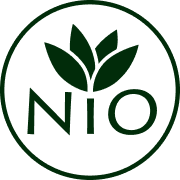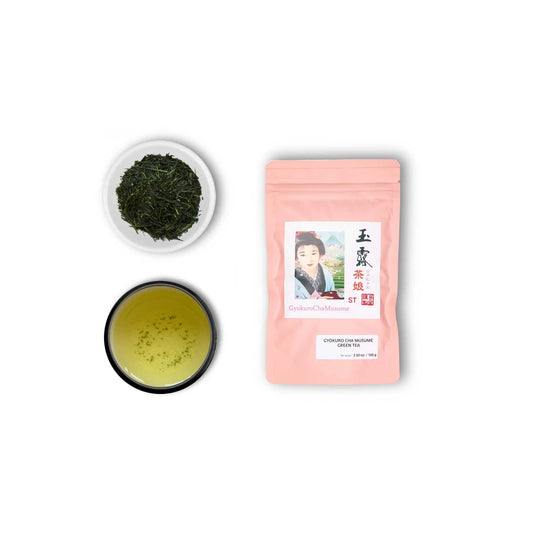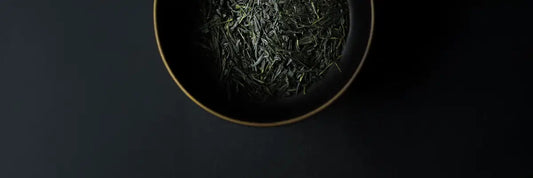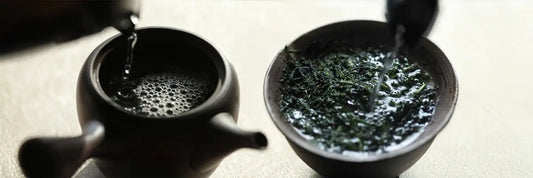-
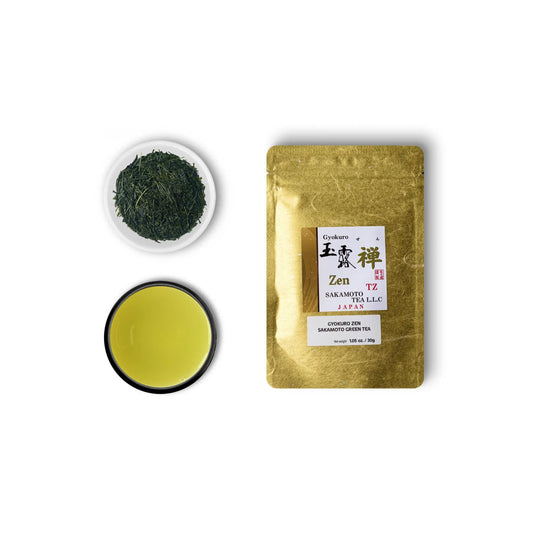 Oferta
OfertaGyokuro Zen Sakamoto
Precio habitual A partir de €49,95Precio habitualPrecio unitario por€58,95Precio de oferta A partir de €49,95Oferta -
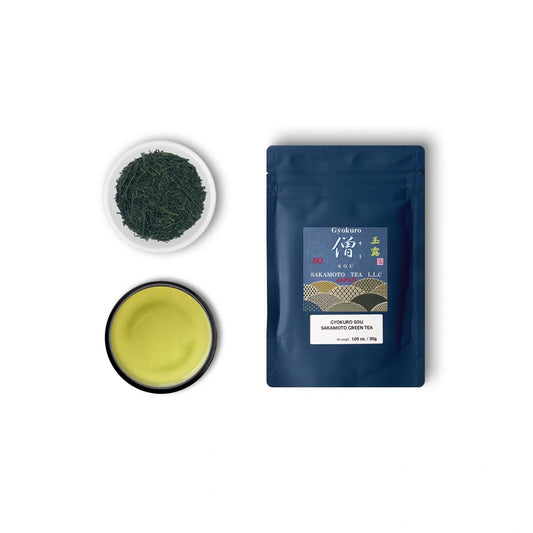 Oferta
OfertaGyokuro Sou Sakamoto
Precio habitual A partir de €36,95Precio habitualPrecio unitario por€44,95Precio de oferta A partir de €36,95Oferta -
 Oferta
OfertaGyokuro Kiwami Sakamoto
Precio habitual A partir de €38,95Precio habitualPrecio unitario por€45,95Precio de oferta A partir de €38,95Oferta -
Gyokuro Té Verde Imperial Cha Musume
Precio habitual A partir de €30,00Precio habitualPrecio unitario por€37,00Precio de oferta A partir de €30,00Agotado -
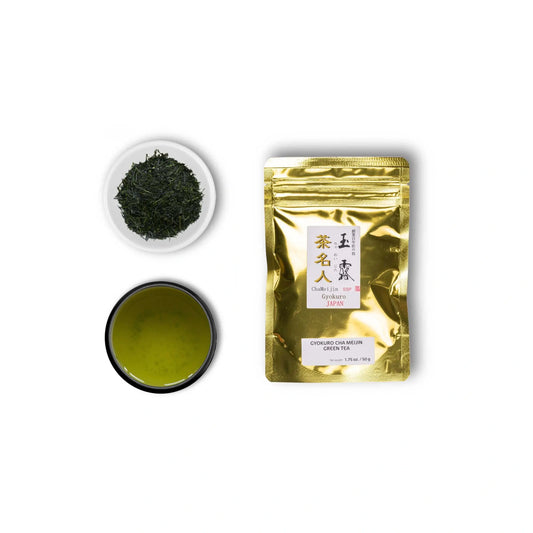 Oferta
OfertaGyokuro Saemidori Cha Meijin
Precio habitual A partir de €33,00Precio habitualPrecio unitario por€41,00Precio de oferta A partir de €33,00Oferta -
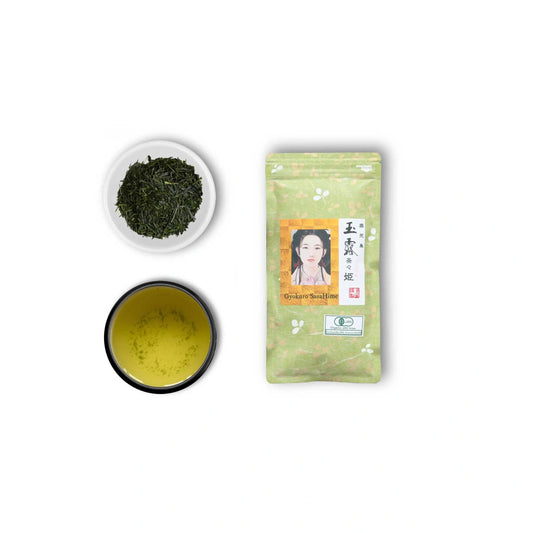 Oferta
OfertaGyokuro Kagoshima Sasa Hime
Precio habitual A partir de €33,00Precio habitualPrecio unitario por€41,00Precio de oferta A partir de €33,00Oferta -
 Oferta
OfertaGyokuro Karigane
Precio habitual A partir de €26,00Precio habitualPrecio unitario por€37,00Precio de oferta A partir de €26,00Oferta
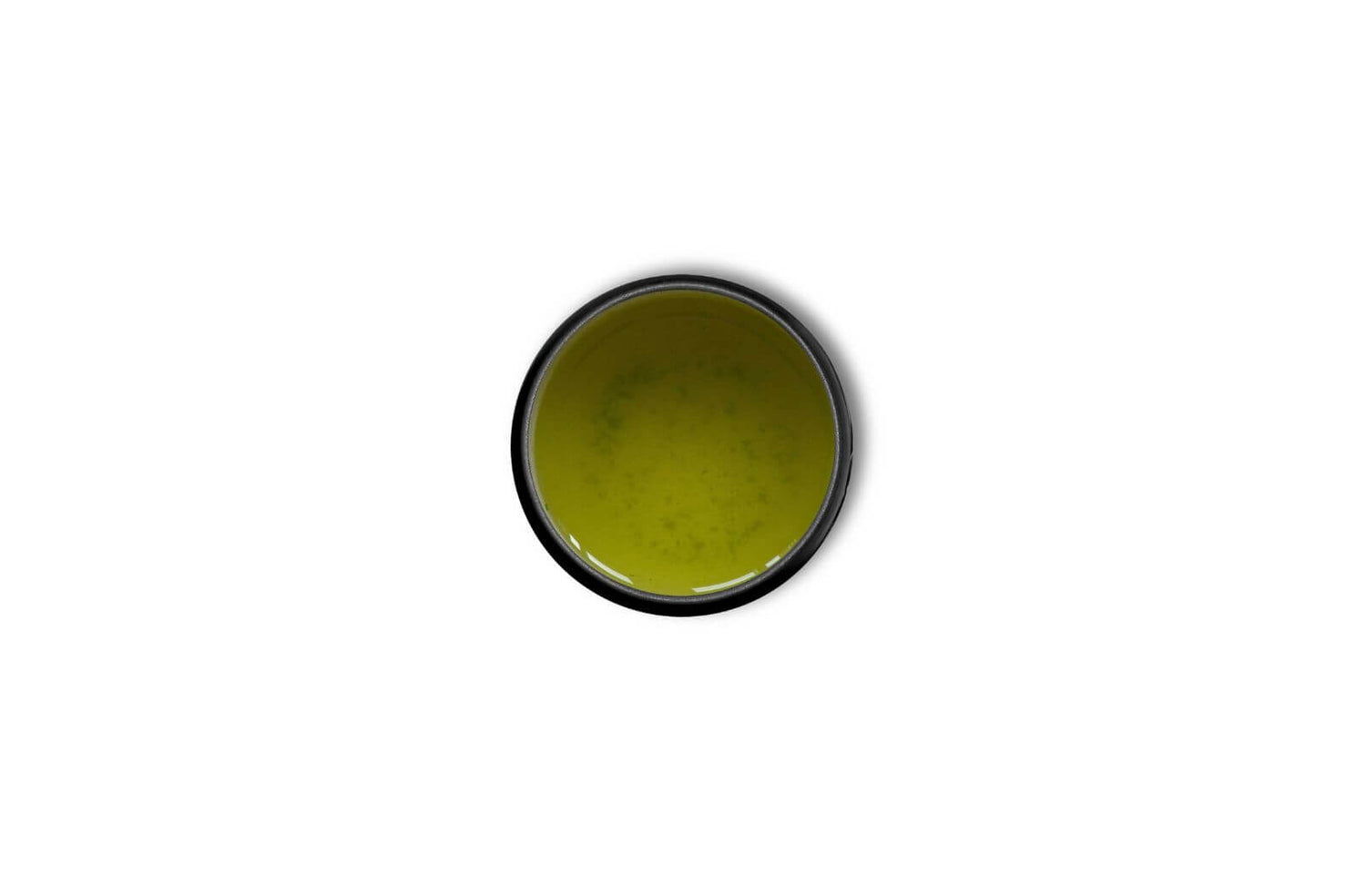
Nuestro Gyokuro Proviene exclusivamente de productores de té japoneses de buena reputación.
Después de viajar por Japón durante los últimos años, nos reunimos con docenas de agricultores y probamos muchos tipos diferentes de Gyokuro . Descubrimos que el Gyokuro producido por el Sr. Sakamoto es realmente único. Ha estado creciendo Gyokuro Cultivaba té en este campo desde pequeño y en 1985 se hizo cargo del negocio familiar y decidió dejar de utilizar pesticidas y productos químicos.
-

Our Gyokuro is exclusively sourced from reputable Japanese tea farmers
After traveling around Japan for the past few years, we’ve met with dozens of farmers and sampled many different types of gyokuro. We found that the gyokuro produced by Mr. Sakamoto is really one of a kind. He has been growing gyokuro tea on this field since he was a little boy and in 1985, he took over the family business and decided to stop all use of pesticides and chemicals.
-

Our gyokuro is 100% organically grown and pesticide free
Gyokuro is particularly difficult to grow, because of the long shading process. To boost the growth of the tea plant during this time, a lot of farmers turn to chemical fertilizers, but for organic farmers like Sakamoto, this is not an option. He has perfected his own organic fertilizer, made from organic compost and sedimentary rock. This delivers nutrients to the soil, without harming the natural ecosystem. The organic fertilizer not only makes the gyokuro more flavorful, it also makes the plants stronger and healthier so they can survive weeks without direct sunlight.
How to brew Gyokuro
To brew gyokuro, there are a couple things to consider. The first is that the leaves are more sensitive to temperature, so you’ll want to use a lower brewing temperature of 140 degrees Fahrenheit or 60 degrees Celsius.
The second thing to consider is that because the gyokuro leaves are so tightly rolled, they will need a full 2 minutes to open up and fully release their flavor into the water. After the gyokuro leaves have been opened up, they only need 20 seconds to brew for the 2nd and 3rd infusion.

Health benefits of Gyokuro
Gyokuro has the highest concentration of caffeine and theanine in the world of leaf tea. While gyokuro can have as much caffeine as coffee, you won’t feel as anxious or jittery when you drink it as the theanine is supposedly able to buffer some of the more negative effects of the caffeine.
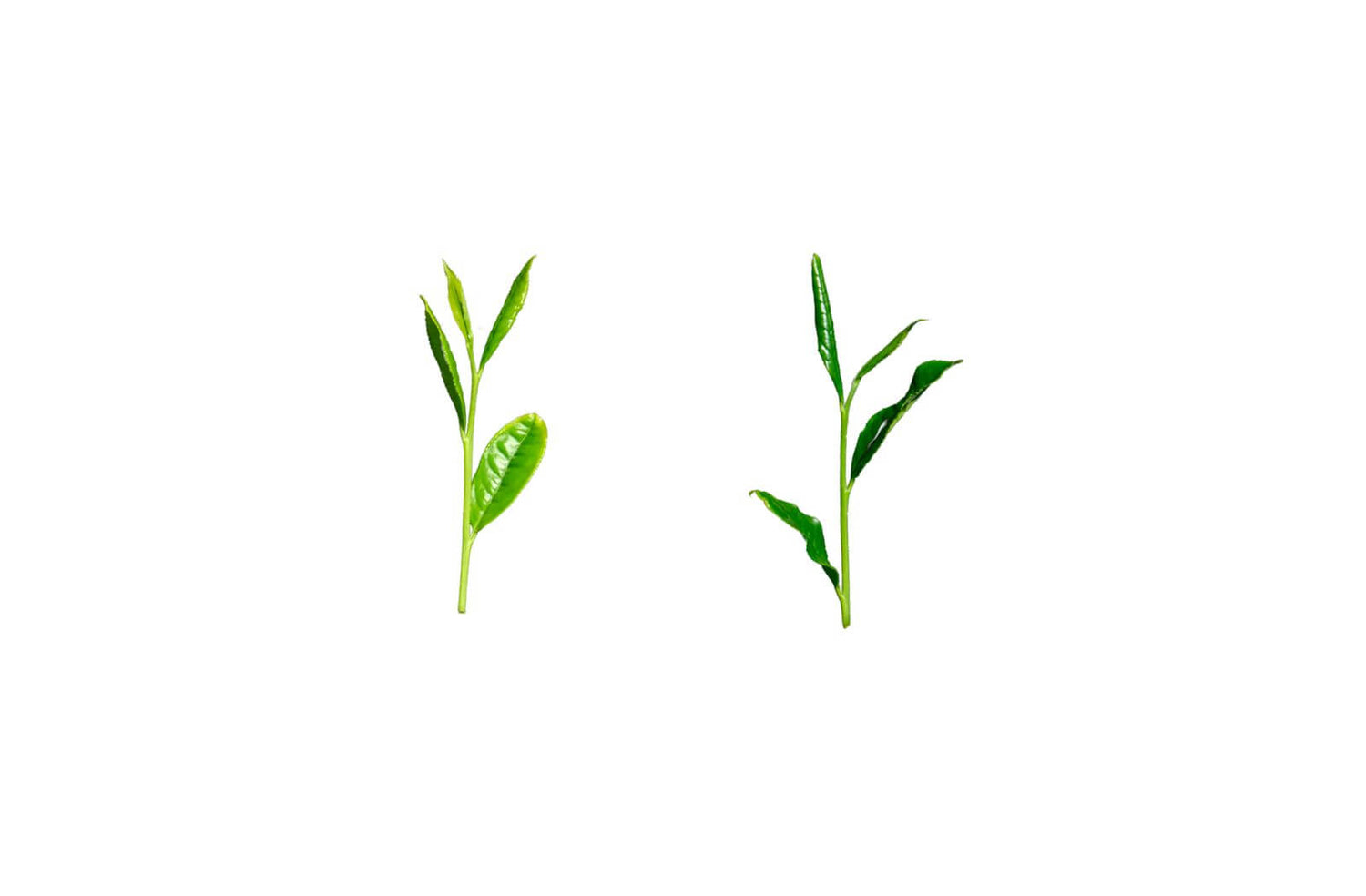
Proceso de cultivo de Gyokuro
El factor principal que hace Gyokuro Su singularidad reside en su largo proceso de sombreado. Cuando la planta del té se expone a la luz solar, convierte automáticamente la teanina en catequinas, como protección contra la luz ultravioleta. Las catequinas son los componentes amargos de la hoja de té, y si se produce un té más dulce, conviene minimizar su presencia. Debido al largo proceso de sombreado..., Gyokuro Conserva mejor la teanina dulce y sabrosa y adquiere menos amargor. Como se puede ver en la imagen, el proceso de sombreado también le da a las hojas de té un color verde oscuro opaco.
Historia de Japón Gyokuro
La historia de Gyokuro Se remonta a la década de 1830, cuando Yamamoto Kahei, un comerciante de té, viajaba por Japón y se reunía con cultivadores de té. Observó que algunos cubrían las plantas de té con una especie de malla para protegerlas de las heladas.
Observó que este sombreado tenía un gran impacto en las hojas y les daba una textura pegajosa durante el proceso de producción, lo que producía un residuo verde. El té recibió su nombre. “ Gyokuro ” o rocío de jade, y pronto se convirtió en uno de los tipos de té más deseados en Japón, atrayendo incluso la atención del emperador.
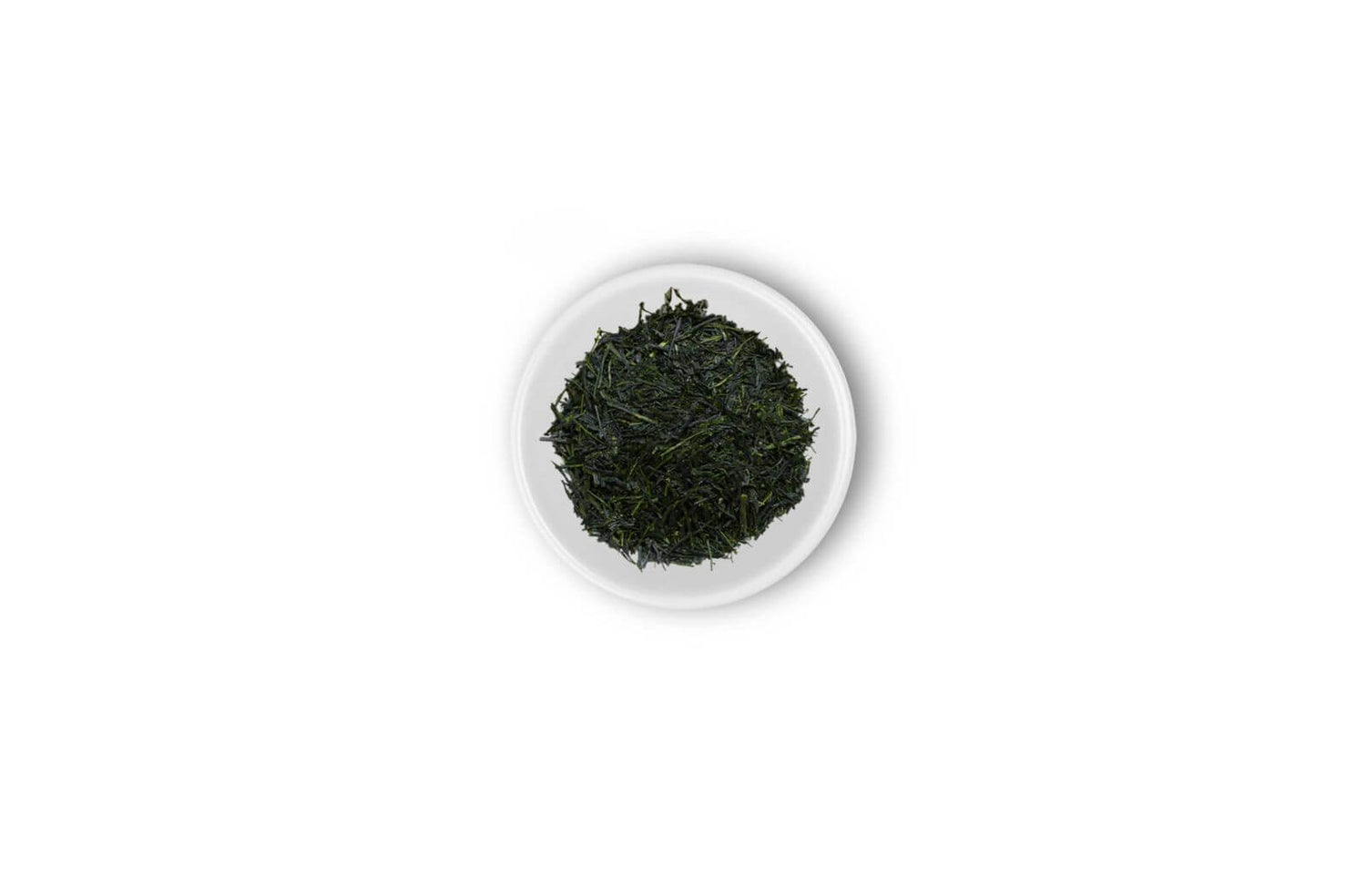
Date un capricho con algo imperial Gyokuro té verde
¿Sabías que? Gyokuro ¿Era el té predilecto del emperador? Por eso ves Gyokuro siendo vendido como “imperial Gyokuro ”. La próxima vez que bebas Gyokuro , ¡Solo debes saber que estás en buena compañía!
Preguntas frecuentes
¿Necesitas ayuda? Te tenemos cubierto…
Entrega
Actualmente ofrecemos entrega gratuita Opciones para todos en todo el mundo. Para ciertos pedidos, también ofrecemos envío exprés gratuito, que suele llegar en un par de días. Si tu pedido es urgente, asegúrate de seleccionar una de las opciones de envío más rápidas al finalizar la compra.
Tés y vajilla
¿Tienes preguntas sobre nuestros productos? Puedes preguntar a nuestro equipo de atención al cliente o consultar los cientos de videos que tenemos en YouTube, Instagram, Facebook y TikTok para más información.
Problemas de pedidos
Aunque los envíos suelen realizarse de forma rápida y eficiente desde nuestros centros de distribución en la UE y EE. UU., pueden producirse retrasos debido a las aduanas, el tráfico durante las festividades y el clima. Te proporcionaremos información de seguimiento al realizar tu pedido para que sepas dónde está tu té en todo momento.
Pagos
Actualmente aceptamos pagos con las principales tarjetas de crédito, PayPal, Apple Pay y transferencia bancaria. Si tiene alguna pregunta sobre su método de pago preferido, contáctenos y encontraremos la solución ideal.
Devoluciones y reembolsos
Aunque las devoluciones son muy poco frecuentes en Nio, ocasionalmente ocurren. Queremos que todos estén satisfechos con el té que reciben, por lo que preferimos ofrecer un té de reemplazo en lugar de dejar a alguien con uno que no le guste. Por favor, contáctenos y podremos resolver cualquier problema que pueda tener con el té que pidió.
